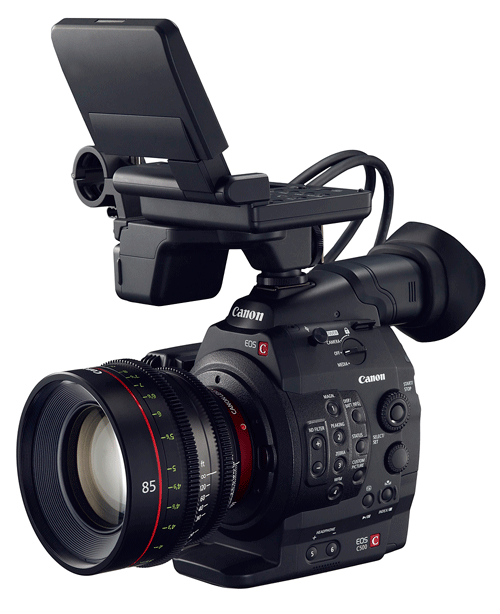Canon’s Larry Thorpe on 4K Video Acquisition
Canon’s Larry Thorpe NEW YORK—The rapid development of affordable 4K cameras and monitors, as well as technology such as HEVC compression, are lighting the path toward a possible 4K future. However, there are many hurdles for broadcasters before 4K becomes a reality in their facilities, much less actually broadcast over the air.

One of the knowledgeable voices of reason in the industry is Larry Thorpe, senior fellow of the imaging technologies and communications group in the professional engineering and solutions division of Canon U.S.A. Thorpe is a renowned expert in the field of video acquisition. A visionary who spent more than 20 years at Sony pioneering the development of HD and digital production technologies in the U.S. broadcast and motion picture industries, Thorpe holds 10 patents in the field of broadcast development. He has also authored or co-authored a variety of papers on camera technology, HDTV imaging, HD lenses and optics.
Thorpe agreed to answer some questions for Broadcast Engineering Extra about the state of 4K acquisition, particularly as it pertains to broadcasters.
BE: Are broadcasters buying 4K/UHD cameras? Can you give some examples? Should broadcasters be considering 4K cameras? Why?
Thorpe: Very few broadcasters are buying 4K/UHD cameras at this juncture. There is no way to deliver such programming over the air today. That said, there is increasing discussion―especially within the broadcast networks―of originating those TV programs that anticipate a long “shelf life” in 4K. This would allow down-conversion to a higher-quality HD for delivery today, while the archived masters can service a future 4K-delivery era. NBC’s “Saturday Night Live” is one example of this. At this time, most networks are exploring 4K shooting to learn all that there is entailed in associated creativity and workflows.
Canon XF205 camcorder BE: Can a skilled news shooter be equipped with a 4K camera and get the job done today? Or are there aspects to 4K that will require retraining for typical broadcast news/feature shooting?

Thorpe: Contemporary 4K cameras today are all large-format single-sensor cameras and accordingly they have shallow depth of field, which is contrary to common ENG shooting needs. This is one reason that there is little impetus to use 4K for news programming. A second consideration is that news programming has become extremely budget-driven and the trend in news is increasingly toward low-cost small-sensor HD camcorders. That said, there are probably some news magazine shows that might seek 4K archival protection. There are presently a number of such shows using large-format single-sensor cameras to achieve a more cinematic look with shallow depth of field, but they are HD and not 4K.
Get the TV Tech Newsletter
The professional video industry's #1 source for news, trends and product and tech information. Sign up below.
BE: For a broadcaster considering 4K, what will change with the workflow at a station? Editing? Archiving? Are there any issues regarding integrating 4K in a broadcaster’s workflow?
Thorpe: The singular issue is the enormous increase in the digital data associated with 4K program origination. This has significant implications for storage capacity and attendant cost escalations. Networking 4K through a broadcast plant will require major infrastructural upgrades. Routing switchers, production switchers, special effects and studio monitors will also be directly impacted. Offline editing can be done with lowered-resolution proxies. Archiving the huge amounts of data required for 4K is also a truly daunting task. It is likely that broadcasters will explore some mezzanine level of compression for their archives.
BE: The higher the resolution, the tougher it is to get a good, sharp focus. What is Canon doing to make it easier for shooters to get the focus right?
Canon’s EOS C500 camera Thorpe: This year, Canon introduced a new technology to implement auto focus within a 4K image sensor itself; this is termed “Dual-Pixel AF.” It is described on Canon’s Cinema EOS website [see : http://cinemaeos.usa.canon.com/?s=dual-pixel++AF]. While at this juncture it is implemented in the two Canon HD cameras that employ this 4K image sensor―the EOS C300 and EOS C100―it is only a question of time before it will be introduced into some Canon 4K camera. The experiences and comments to date by our end-users have been highly positive and laudatory regarding the effectiveness of this new technology.

BE: Are there any other points that broadcasters need to plan for when considering the impact of 4K at their stations?
Thorpe: Visually, the most important consideration is that of depth-of-field. Some shows can effectively and creatively exploit the shallow DoF associated with today’s large-format 4K cameras. But, many other productions (such as ENG-style broadcasts) need a deeper depth of field.
Also, the reproduction of the human face by 4K cameras will require extensive pre-testing. This will encompass lens selection, settings of the camera processing, lighting practices, and research into new makeup techniques. Proper coordinated exploration of all these factors―then careful implementation―should ensure that the new 4K imagery will do full creative justice to facial reproduction.
